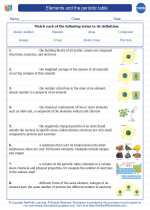Slime Molds
Slime molds are fascinating organisms that belong to the kingdom Protista. They are not fungi, plants, or animals, but rather a unique group of organisms with complex life cycles. Slime molds can be found in various habitats, including forests, grasslands, and even in urban areas.
Life Cycle
The life cycle of a slime mold typically consists of two main stages: the plasmodial stage and the spore-bearing stage. During the plasmodial stage, the slime mold exists as a large, multinucleate mass of cytoplasm without cell walls. This mass can move and engulf food particles, and it is during this stage that the slime mold is most visible. When environmental conditions become unfavorable, the plasmodium transforms into the spore-bearing stage, where it produces spores that can withstand harsh conditions until more favorable conditions return.
Ecological Importance
Slime molds play an important role in the ecosystem as decomposers. They help break down dead organic matter, such as leaf litter and wood, and recycle nutrients back into the environment. Additionally, some species of slime molds have been found to have potential uses in biotechnology and medicine.
Study Guide:
- Describe the two main stages of the slime mold life cycle.
- Explain the ecological importance of slime molds in the ecosystem.
- Compare and contrast slime molds with other organisms such as fungi and protists.
- Research and present a case study on the potential biotechnological or medicinal uses of slime molds.
By studying slime molds, you can gain a better understanding of the diversity of life on Earth and the intricate roles that different organisms play in the environment.
[Slime Molds] Related Worksheets and Study Guides:
.◂Chemistry Worksheets and Study Guides High School. Elements and the periodic table

 Worksheet/Answer key
Worksheet/Answer key
 Worksheet/Answer key
Worksheet/Answer key
 Vocabulary/Answer key
Vocabulary/Answer key
 Vocabulary/Answer key
Vocabulary/Answer key
 Vocabulary/Answer key
Vocabulary/Answer key
